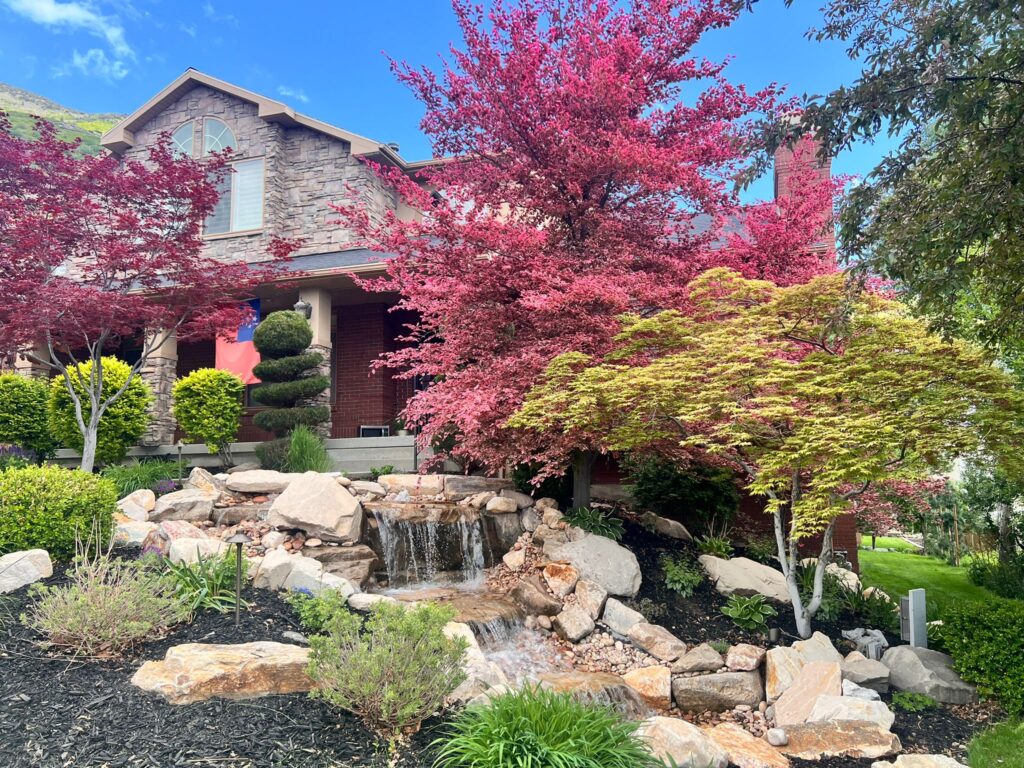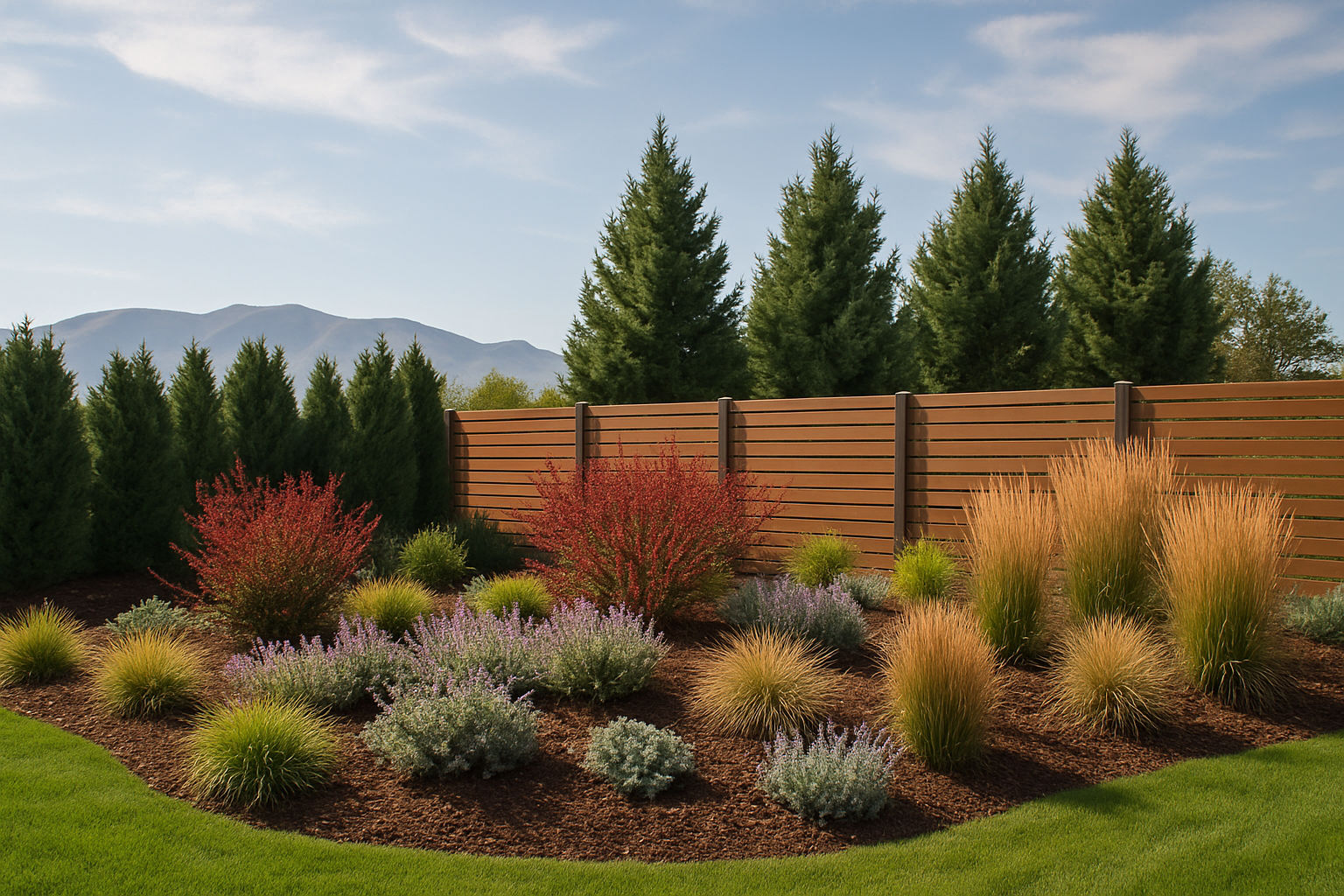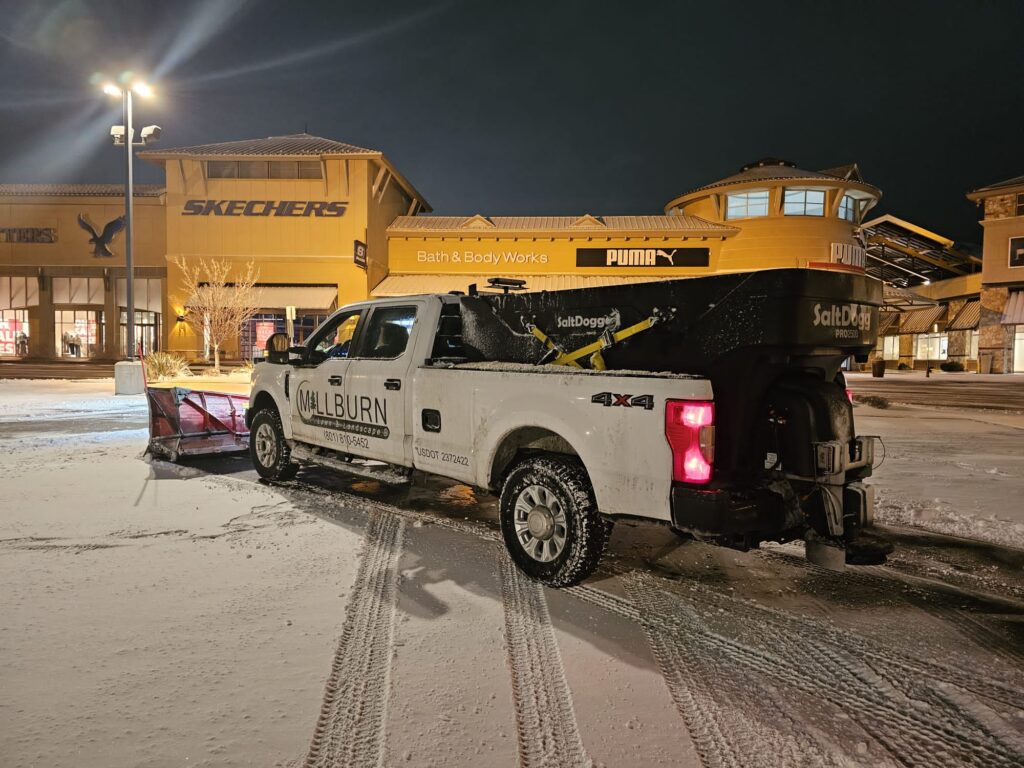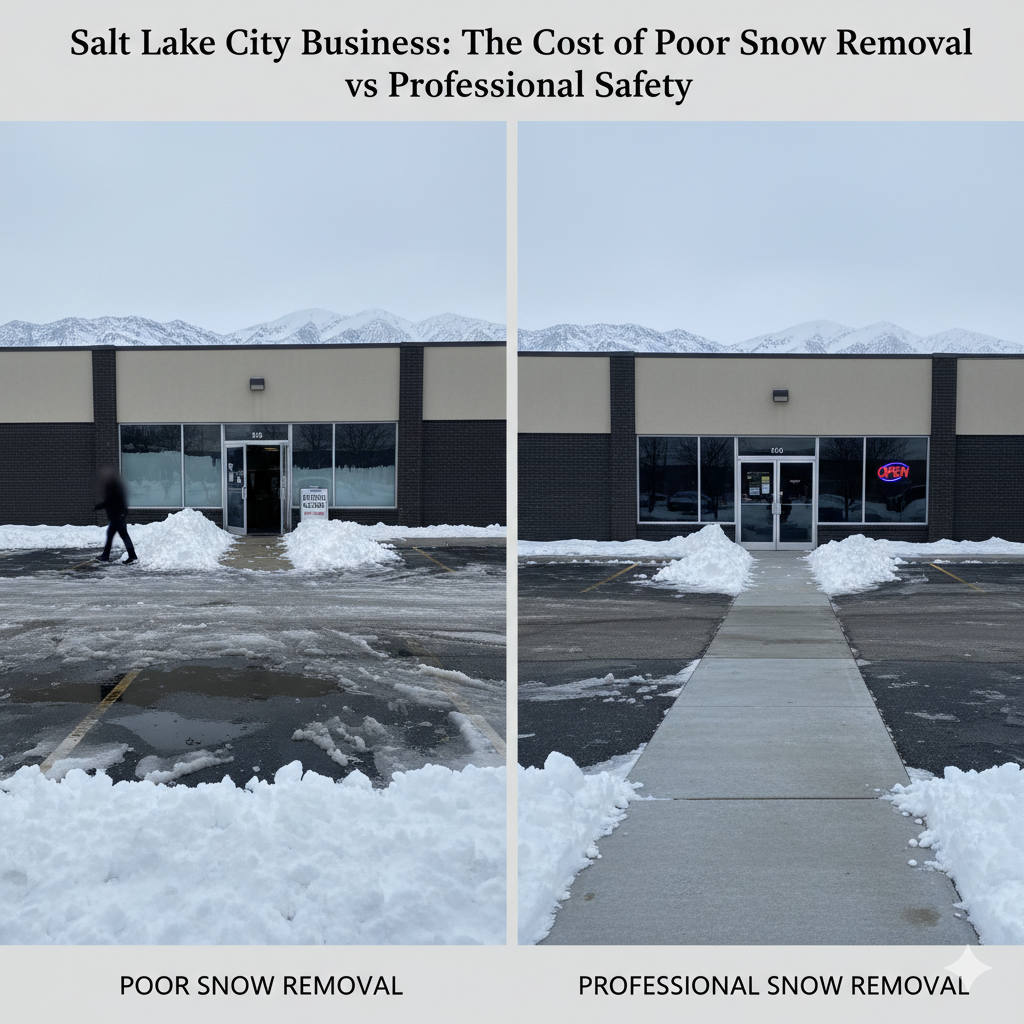Don’t Let the Wind Wreck Your Yard—Design to Withstand Utah’s Unique Climate
If you live in Salt Lake City, you know how intense those canyon winds can get. From sudden gusts that topple patio furniture to prolonged breezes that damage trees and dry out plants, wind is a very real factor in Utah landscape design.
Fortunately, you can protect your property by creating a wind-resistant landscape that not only looks beautiful but also stands up to the elements. In this guide, we’ll break down practical strategies, plant recommendations, and design ideas tailored specifically for Utah’s canyon wind conditions.
Understanding Utah’s Canyon Winds
The Salt Lake Valley experiences frequent wind events—especially from east canyon flows like Parleys, Emigration, and Little Cottonwood. These gusts can exceed 60 mph in certain foothill neighborhoods. While great for cooling in summer, they can:
- Uproot shallow-rooted trees
- Erode soil and mulch
- Damage fencing, pergolas, and patio structures
- Stress or dry out landscape plants
That’s why proper planning for Utah wind-resistant landscaping is crucial—especially for homes in exposed or elevated locations.
Use Layered Windbreaks to Diffuse Gusts
The key to backyard windbreak ideas isn’t building a solid wall—it’s creating layers that slow and redirect the wind. Start with a strategic mix of natural and structural elements.
3 Layers of Effective Windbreak Design:
- Outer Buffer Zone:
- Use wind-tolerant trees like Austrian pine, serviceberry, or Rocky Mountain juniper
- Plant in staggered rows to filter wind instead of blocking it entirely
- Mid-Layer Shield:
- Shrubs like rabbitbrush, lilac, or viburnum are great for absorbing wind impact
- Create depth with alternating heights and species
- Inner Defensible Zone:
- Use decorative fencing, trellises with climbing vines, or heavy stone elements
- These define outdoor living areas and reduce wind speed near patios or gardens
Pro Tip: Avoid planting large evergreens too close to the house—they can become hazards if uprooted during extreme winds.
Choose Wind-Tolerant Plants That Thrive in Utah
The best Utah wind-resistant landscaping uses native and adaptive species that can endure high winds and dry air without constant care.
Top Wind-Resistant Trees for Salt Lake City Yards:
- Hackberry – Flexible branches, strong root system
- Bur Oak – Deep roots and sturdy limbs
- Kentucky Coffeetree – Excellent structure, minimal breakage
Best Shrubs & Grasses for Windy Zones:
- Rabbitbrush – Resilient, low-water, native
- Red-twig Dogwood – Wind-tolerant and beautiful in winter
- Karl Foerster Grass – Ornamental and sway-friendly
- Blue Fescue – Low-profile, dense, and drought-hardy
Using a mix of these plants helps anchor the soil, protect more delicate species, and reduce maintenance over time.
Reinforce Structures and Hardscaping Elements
Utah’s gusty conditions can wreak havoc on decks, fences, pergolas, and even paver installations. Smart design choices help ensure these features are long-lasting.
Recommendations for Wind-Safe Hardscaping:
- Use heavy materials: stone, concrete, and thick timber perform better than lightweight composites
- Anchor pergolas and shade sails securely with deep footings or steel posts
- Choose open-slat fencing over solid barriers to allow wind to pass through
- Position patios in protected zones, ideally behind the home or plant buffers
Canyon wind yard design isn’t about resisting nature—it’s about working with it through smart placements and materials.
Mulch, Soil, and Irrigation Strategies for Windy Yards
Wind accelerates soil erosion and moisture loss. To keep your landscape healthy, you’ll need to adapt your ground-level materials and watering systems.
Key Tips:
- Use gravel or rock mulch instead of lightweight bark or wood chips
- Apply a soil stabilizer or living groundcover (like creeping thyme) to reduce blow-off
- Install drip irrigation under mulch to retain moisture at the root zone
- Create small berms or contour lines in the yard to redirect airflow and reduce runoff
Wind-Resistant Landscape Design for Small Yards
Even small city lots can benefit from backyard windbreak ideas. Vertical gardens, container plantings, and privacy screens can all be adapted to reduce wind intensity and create peaceful outdoor nooks.
- Use raised beds with heavy planters as wind barriers
- Install wood or metal trellises to slow airflow near patios
- Choose compact, wind-hardy shrubs for boundary planting (e.g., dwarf boxwood or potentilla)
These approaches are especially useful in Salt Lake City neighborhoods where lot lines are tight but winds are strong.
FAQs: Wind-Resistant Landscaping in Utah
Q: Can fences protect my yard from canyon winds?
A: Solid fences often cause more problems by creating wind tunnels. Opt for semi-open designs like horizontal slats or decorative metal panels.
Q: What trees are most wind-resistant in Utah?
A: Austrian pine, bur oak, and hackberry are top choices due to their deep roots and flexible branches.
Q: How do I stop mulch from blowing away?
A: Use heavier gravel mulch or plant dense groundcovers. Avoid light bark mulch in windy areas.
Q: Is artificial turf a good choice for windy areas?
A: Yes, if installed properly with heavy infill and edging, it can reduce erosion and withstand gusts better than traditional sod.
Q: Can I make my backyard more usable during windy seasons?
A: Yes! Smart layout, sheltering plants, and wind-buffering structures can create cozy microclimates for outdoor enjoyment.

Your yard shouldn’t be at the mercy of canyon winds.
At Millburn Lawn & Landscape, we design with Utah’s elements in mind. Whether you need a wind-resistant planting plan, new hardscape installation, or a full canyon wind yard design, we’re here to help.
Schedule your free landscape consultation today
Explore our Landscape Design Services in Salt Lake City




